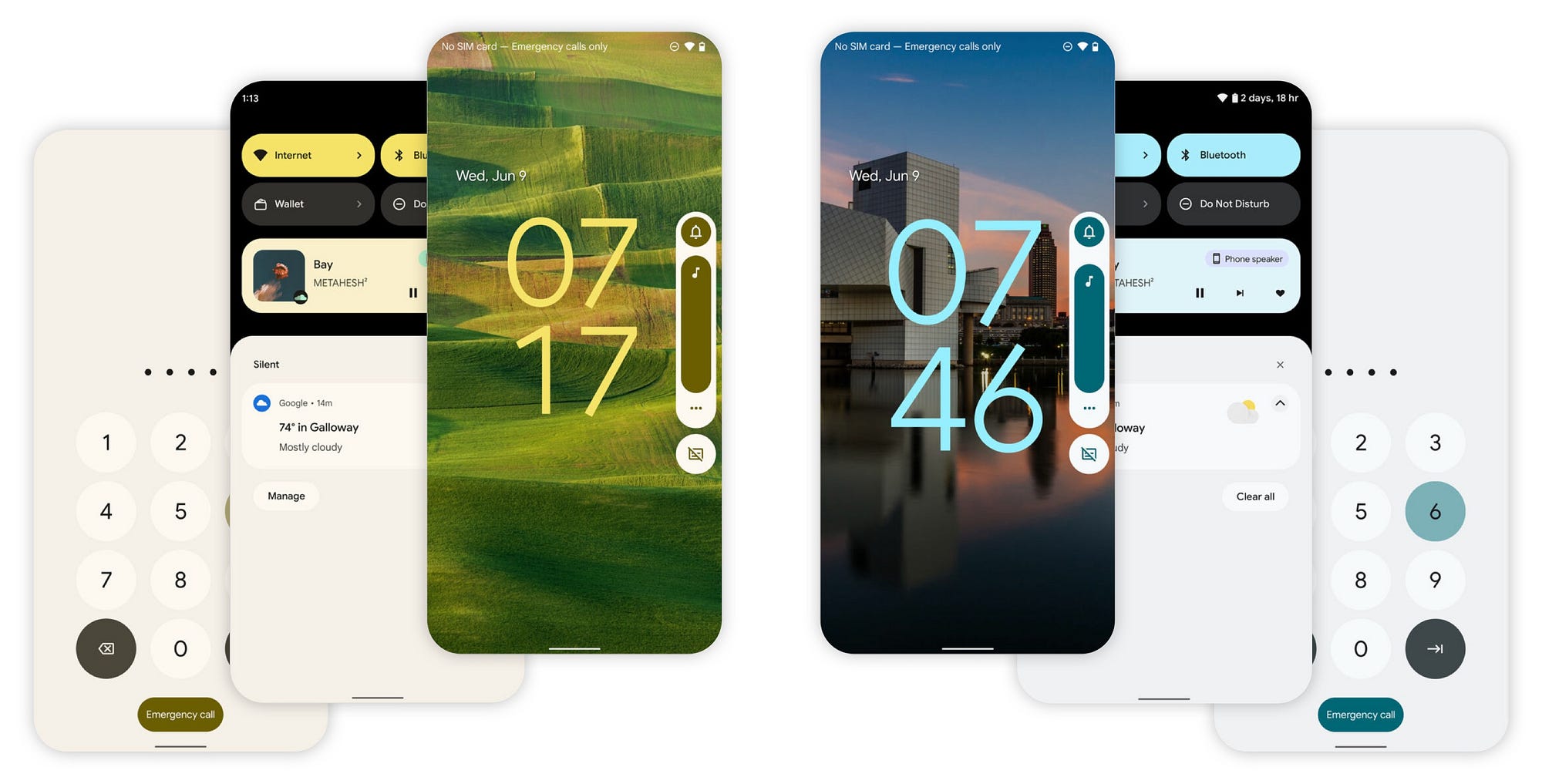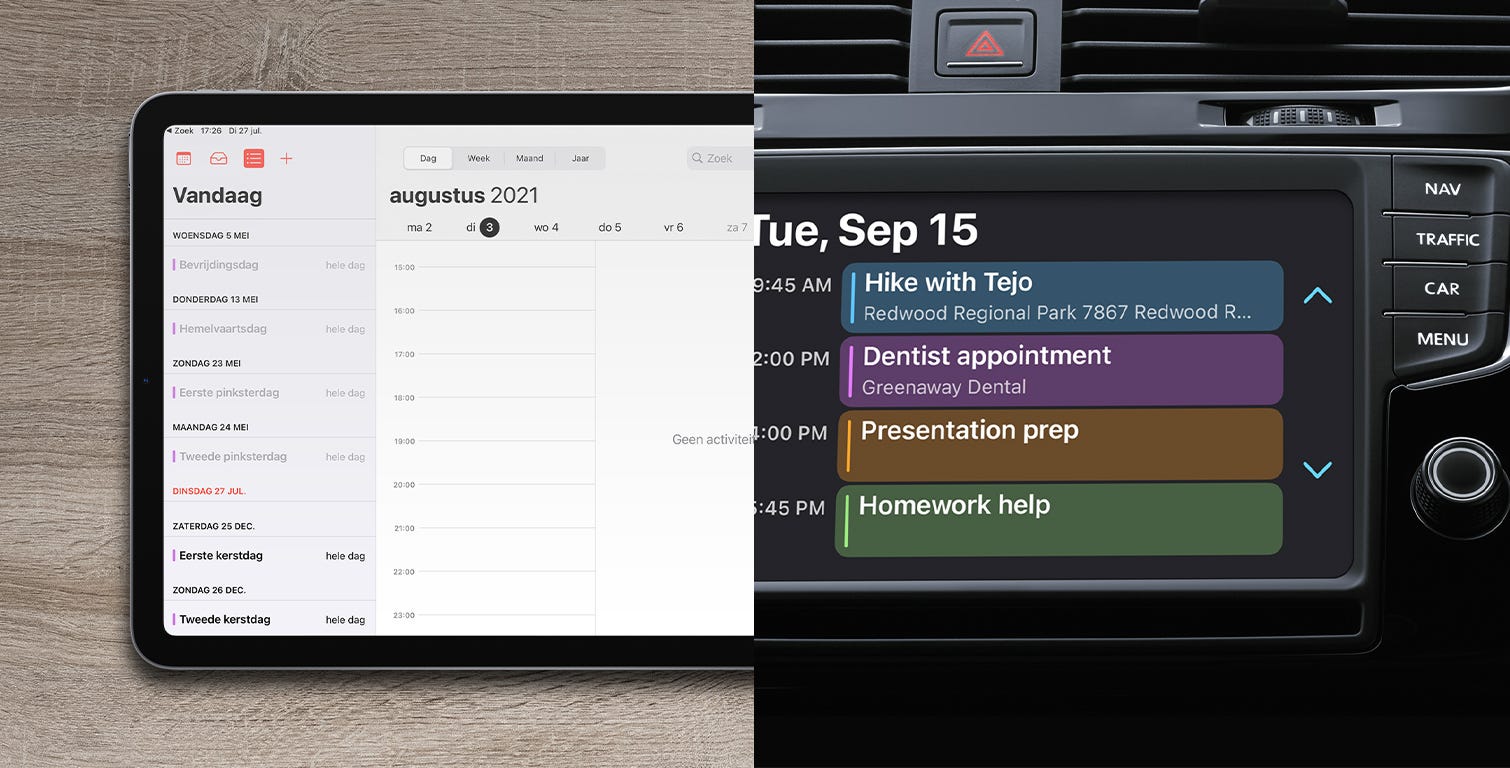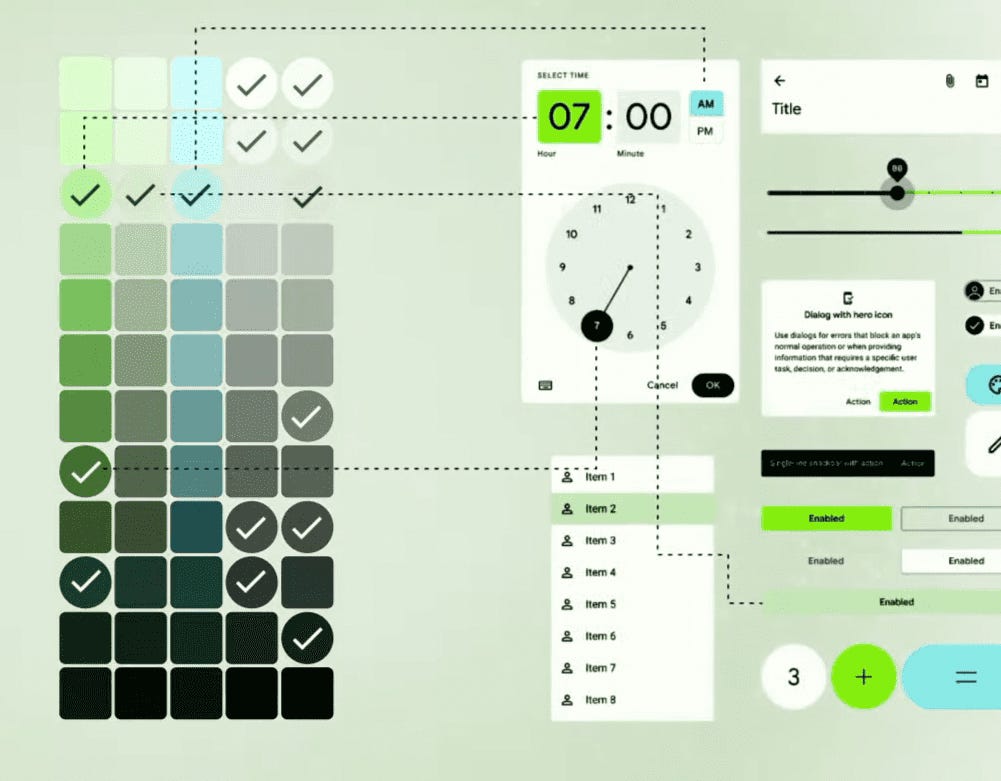
Your next wallpaper might be the start of a revolution
Is Material You the start of personalized interfaces?
Recently (may 18th 2021), Google revealed Material You. It is the second major update of its design system called Material Design. And this time its focus is on, you guessed it, you. You, as in the user of Google products. So that’s you too.
In case you missed it, Material You is all about personalization. It will allow you to configure the interface of the Google products you use. Make them look the way you want.
Some people will love this. Most people won’t bother. For them, changing the default settings is too much of a hassle. They just want things to work. Don’t make me think, right? And that’s where it gets interesting. Because Google came up with a way to personalize the interface without going to the settings page.
For the Android implementation of Material You, Google took an interface element most people do configure; their wallpaper. Material You analyses this image, and creates a personal color palette for your interface, based on this image. Boom! A personalized interface without the hassle!
That might just be a nice gimmick. But it might also be just the start. The start of a revolution.
 Boom! A personalized interface without the hassle! (Images by Google)
Boom! A personalized interface without the hassle! (Images by Google)
Focus on you
A focus on you is not a new thing. Social media focuses on you all the time. They keep track of content you interacted with in the past. And show you similar content again, because they know it’s likely you will interact with it again. And stay on their platform for a few more ads.
Netflix focuses its thumbnails on you. Are you clicking on thumbnails of action images a lot? They will show more thumbnails of action scenes. Clicking on thumbnails with romantic images more? They’ll show you a thumbnail with a romantic scene. Both from the same series.
The AI behind Gmail focuses on you. It analyses your writing style, and, with Smart Compose, offers suggestions based on that analyses, making writing emails a lot faster while being true to your style of writing.
Personal content in a similar interface
Those are just a few examples of personalizing content for the individual user. But while the content is personalized, the interface stays the same for every user.
Adaptive interfaces exist. They adapt to different devices. My phone is totally different from my laptop, both in screen size and interface, so an application looks and works differently there.
Interfaces adapt to context too. Apple Carplay looks different from my iPad, although the touchscreen device they both work on is roughly the same. But the context is totally different. In my car my focus should be on the road, so the interface of Apple Carplay is much clearer and the information density is much lower than on my iPad to facilitate a safe driving experience.
 Adaptive interfaces; Apple Carplay looks different from my iPad, although the touchscreen device they both work on is roughly the same (Images by Apple)
Adaptive interfaces; Apple Carplay looks different from my iPad, although the touchscreen device they both work on is roughly the same (Images by Apple)
An interface for you
Material You now takes the next step in the interface design journey. By combining personalization and adaptive interfaces, Google creates the first glimpse of an interface that adapts to you.
Where will this next step take us? Starting with the color palette, interfaces will become less and less uniform. Less and less fixed. Everything will start to get fluid. Designed to adapt the user’s needs and context.
Applications will track the way users use it and adapt their interface to best enable that use. You use your device to read a lot? Then you’re probably a textual person. Based on this, an app might display more information that is copy dense. You only spend short amounts of time in an app? Let’s use graphs to provide you with a quick overview.
The frontline of the revolution
 Material You color algorithm (Image by Google)
Material You color algorithm (Image by Google)
Interface designers will be in the frontline of this revolution. People like me and you. We won’t define a single look for anything anymore. Instead, we will define which variations are allowed. Instead of thinking in yes or no, we need to learn to think in minimum and maximum terms. Instead of picking colors, we will define an algorithm that picks colours that match the preferences of the user. And still look good together. Interface designs will be a complex set of rules that have to work in every possible combination.
We’ll be entering a new world. A world where algorithms will be designing. And we will be designing those algorithms.
A Dutch version of this post can be found on Emerce.nl 👉 https://www.emerce.nl/achtergrond/volgende-wallpaper-kan-begin-revolutie